The Amazon, Earth’s Garden
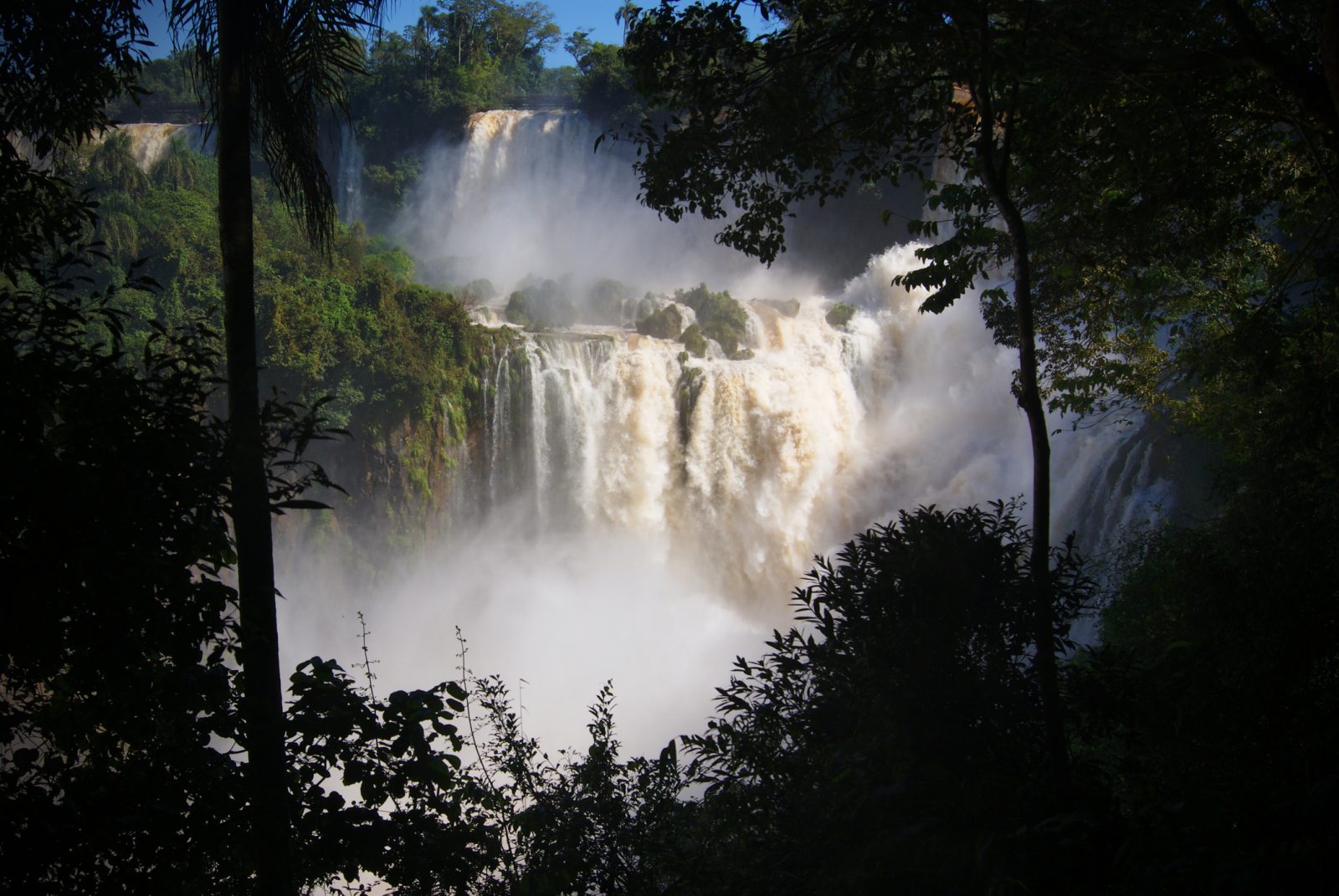
|
Getting your Trinity Audio player ready... |
The Amazon is one of the world’s most fascinating and diverse ecosystems. It has been the home to millions of animal and plant species and indigenous people for over a millennia.
The Amazon jungle is the world’s largest tropical Rainforest, covering an area of approximately 2.7 million square miles, equivalent to roughly 40% of South America’s total area It spans eight countries: Brazil, Peru, Colombia, Ecuador, Venezuela, Bolivia, Guyana, and Suriname. It is one of the most biodiverse regions in the world, with an estimated 16,000 tree species, 2.5 million insect species, and thousands of other plant and animal species.

The Amazon is home to over 40,000 species of plants, some containing medicinal properties traditionally used to treat various ailments. Quinine, a medicine used to treat malaria comes from the bark of the cinchona tree. Modern medicine’s research on several plants has revealed that many contain substances that can treat various diseases. Deforestation of the Amazon threatens these medicinal plants and their availability to local communities.
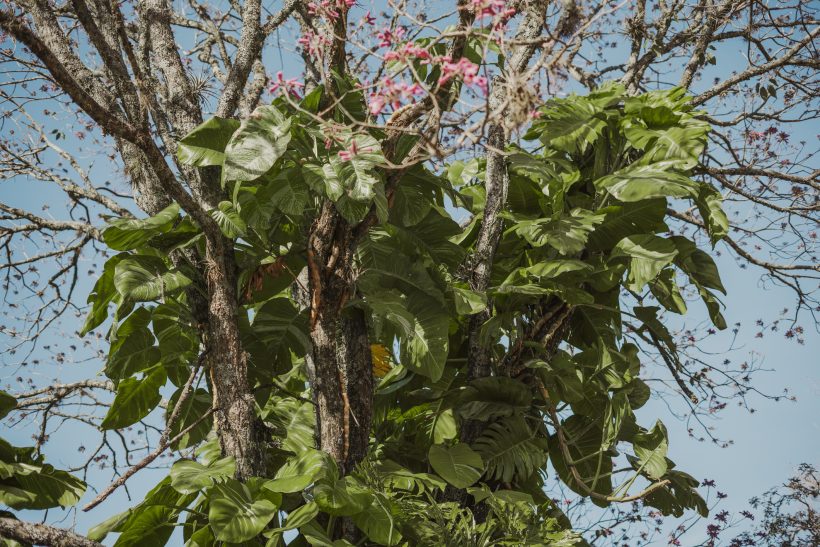
The Amazon is home to some of the world’s most endangered animals like the giant otter, the jaguar, and the harpy eagle.
Giant Otters are found in the rivers and lakes of the Amazon and can grow up to 6 feet long. They are very skilled swimmers and hunters with a diet that consists primarily of fish but also includes crabs and snakes.

Jaguars are the largest cats in the Americas and the third-largest globally, after lions and tigers. In the Amazon Rainforest, they serve as apex predators and regulate other species’ populations. Jaguars are excellent swimmers who can hunt prey on land and water.
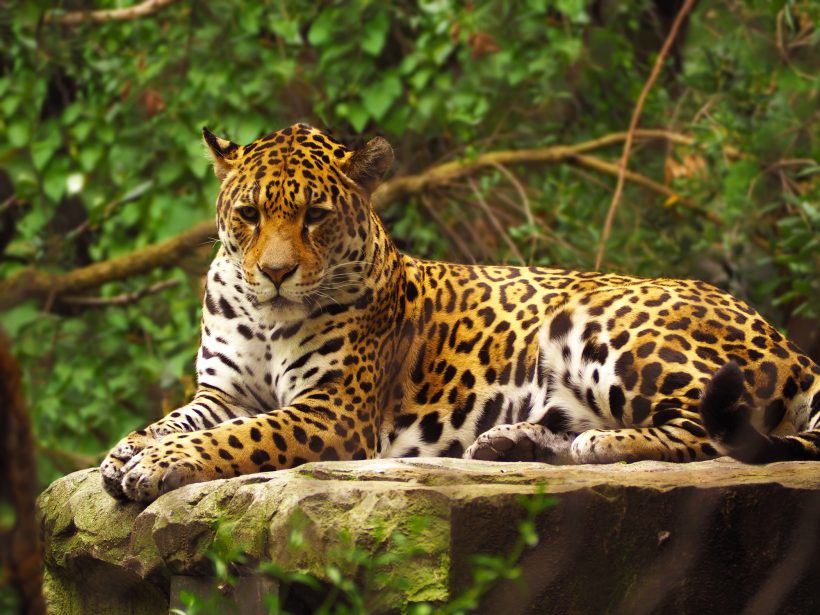
The Harpy Eagle is a powerful bird of prey. The wingspan of these birds can reach over 6 feet, and they can grow up to 3 feet tall. They primarily hunt monkeys and other arboreal prey and are known for their strength and agility.
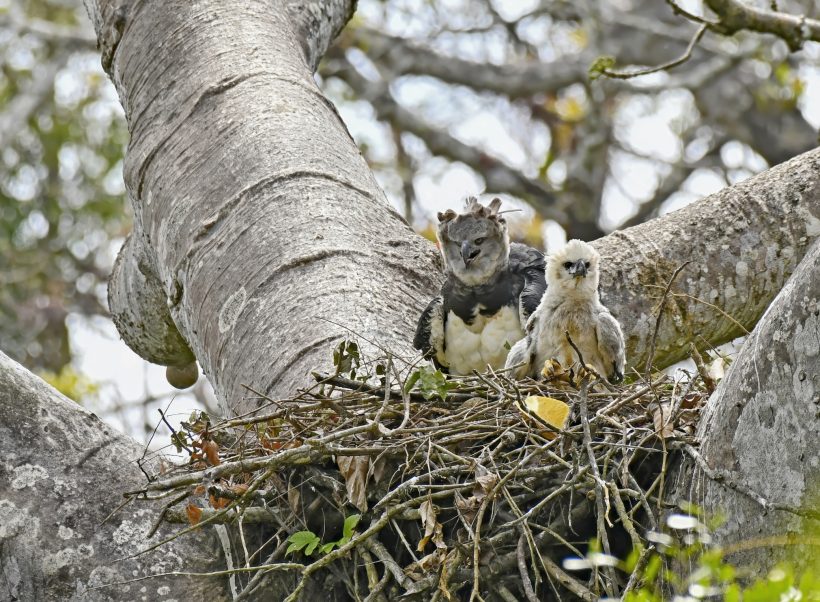
The Amazon River is approximately 4,000 miles long, making it the second-longest river in the world after the Nile. The river is also the deepest in the world, with some parts as deep as 100 meters (330 feet). From Peru’s Andes Mountains, it flows through Ecuador, Colombia, Venezuela, Bolivia, and Brazil, emptying into the Atlantic Ocean. It is the lifeline of the Rainforest, providing the necessary water and nutrients for the forest biomes to thrive. The river also serves as a means of transportation for millions living along its shore. It also contains a diverse and unique collection of wildlife not found anywhere else.
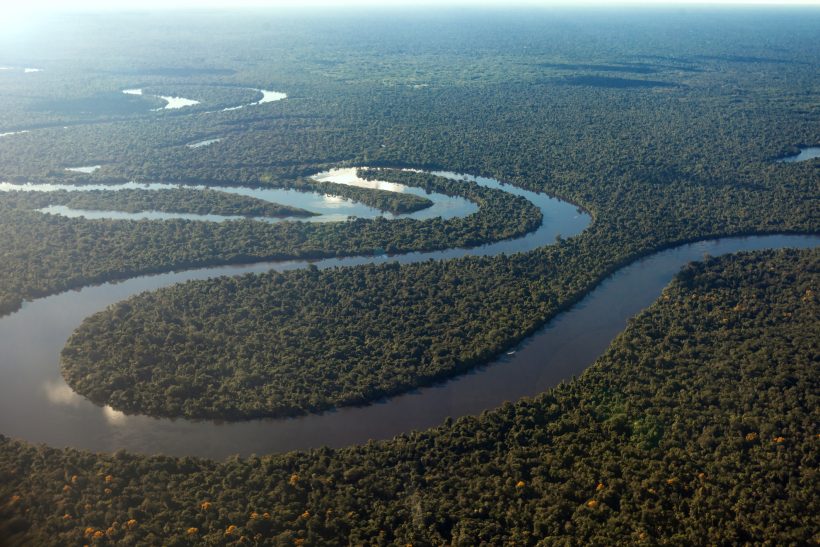
One of the most unique and fascinating creatures in the Amazon River is the Pink River Dolphin, also known as the Boto or Amazon River Dolphin. They play a crucial role in maintaining the balance of the Amazon River ecosystem and are an essential part of the culture and mythology of the region. However, they face threats of habitat loss, fishing nets, and pollution. Efforts are underway to conserve Pink River Dolphins and their habitat, including education, protection, and regulation.
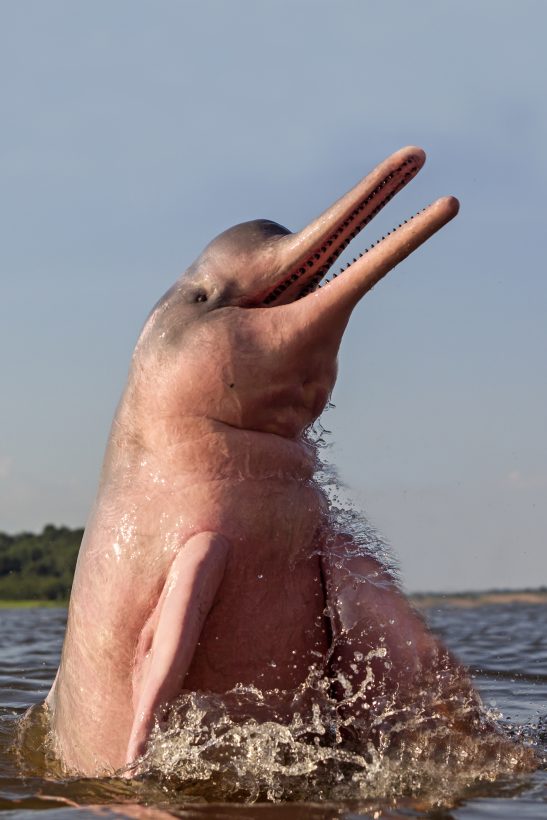
Piranhas are one of the most feared creatures of the Amazon River. These predatory fish tend to move in schools and are known for their sharp teeth and aggressive behavior; however, Piranhas are omnivorous and only attack humans or animals when they feel threatened or hungry.
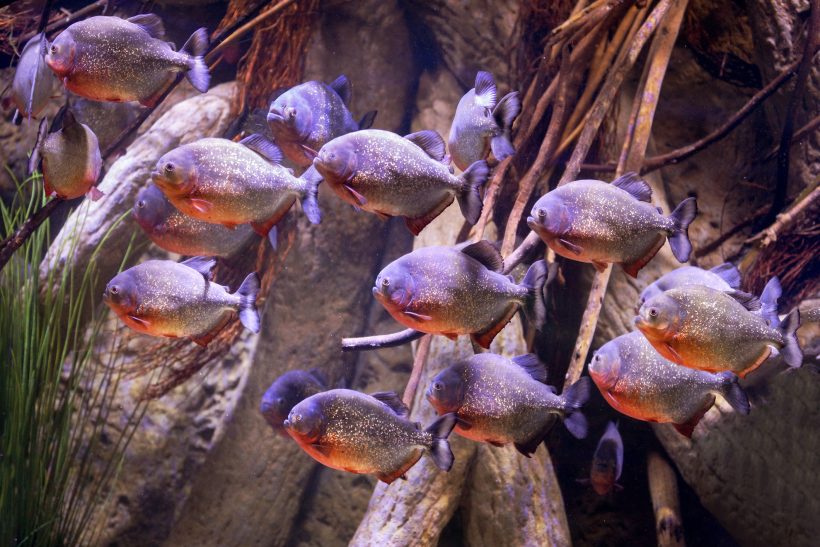
The Green Anaconda, the largest snake in the world, can grow up to 9 meters long (29.5 ft) and weigh over 250 kg (550 lbs). Anacondas are constrictors and non-venomous. They rely on their immense size and strength to overpower their prey (this includes fish, birds, and even large mammals like jaguars) by constriction.
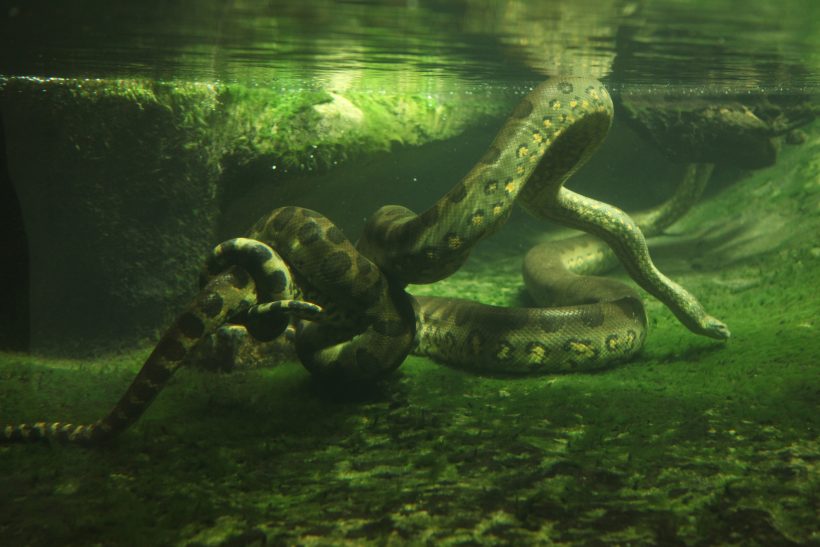
The Amazon Rainforest is also home to numerous indigenous communities that have lived in the forest for thousands of years. These communities have developed unique ways of living in harmony with the woods. They have a deep understanding of the forest’s medicinal plants and animals.

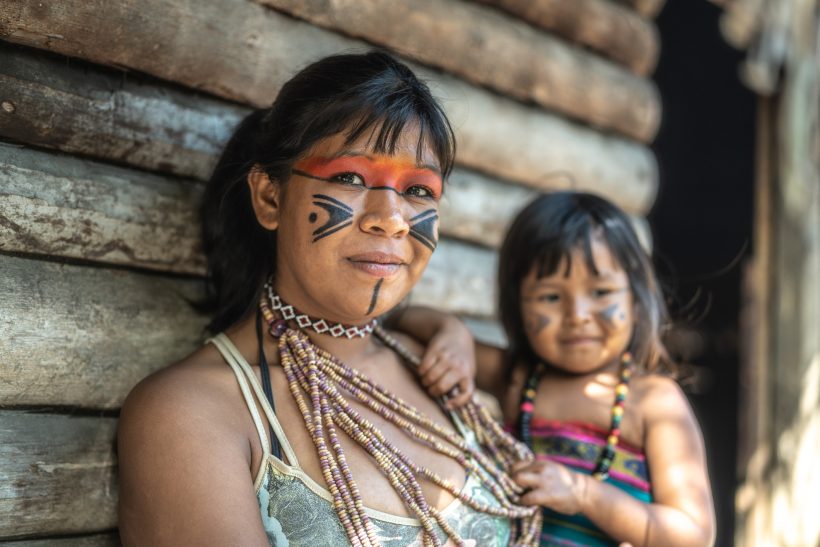
Deforestation of the Amazon
The Amazon rainforest is crucial to maintaining a stable global climate by absorbing carbon dioxide and giving off oxygen. It is responsible for absorbing over 2.2 billion tons of carbon dioxide annually and producing 20% of the world’s oxygen. Deforestation and other human activities endanger the Amazon Rainforest’s ability to continue serving as the “lungs of the earth.”
Large swaths of the Amazon Rainforest are facing destruction from farming, raising animals, and harvesting wood. Loss of biodiversity, increased greenhouse gas emissions, and changes to regional and global climate patterns are just some of the many adverse outcomes of deforestation. The Brazilian government has taken steps to stop deforestation, but the problems caused by illicit logging and land grabs persist. Protecting the Amazon Rainforest from further damage requires concerted efforts.

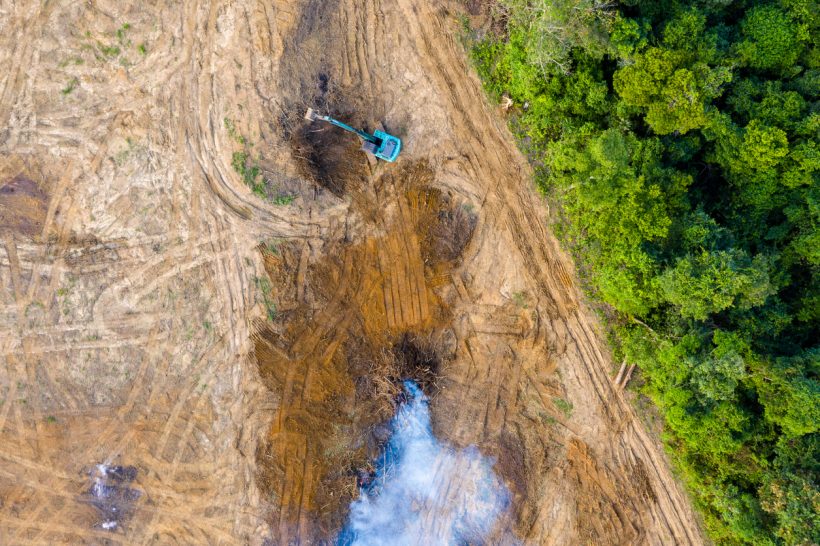
Eco-Tourism
A sustainable tourism method that promotes local communities’ well-being, eco-tourism focuses on conserving the natural environment. Eco-tourism is a sustainable way to experience the Amazon Rainforest and support conservation efforts. Amazon rainforests are some of the most biodiverse and fragile ecosystems on Earth. Eco-tourism offers a unique opportunity to experience this incredible landscape with minimal environmental impact.
Guided tours give visitors an immersive experience of the Rainforest’s flora and fauna. These tours educate visitors about the importance of conservation and sustainable development and promote awareness about the region’s challenges.

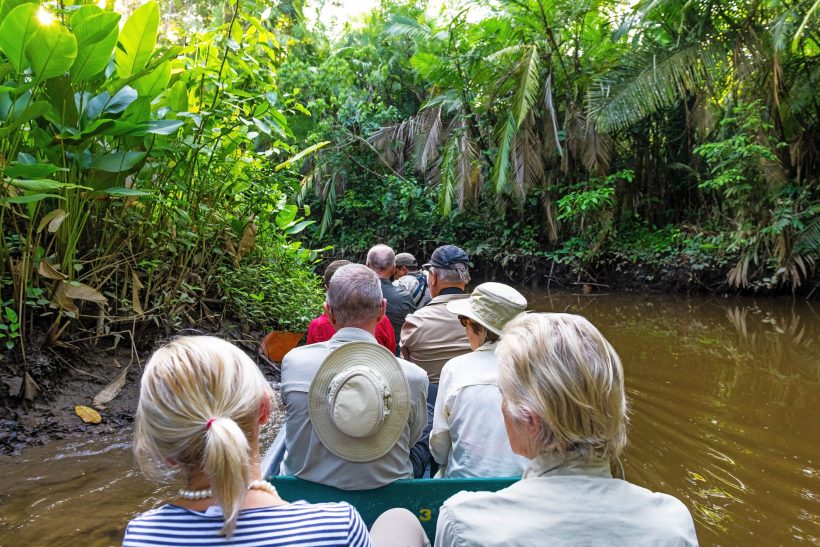
The Amazon Rainforest and River are unique and vital ecological systems that face threats from human activities. However, many initiatives and efforts are underway to protect and conserve these precious resources. By learning about these essential facts, we can better appreciate the complexity and importance of the Amazon Rainforest and River and understand the need for continued conservation and protection.
What's Your Reaction?
I am Dr. Jamil Ahmad Khan. Philosophy, Muslim nationalism in the Subcontinent, political biographies, and religion are among my special interests. I am an educator, historian, and writer. I have received my Master's, M.Phil., and PhD degrees in History with Philosophy from the Islamia University of Bahawalpur, Punjab. I have also received my bachelor's and master's degrees in education from the Shah Abdul Latif University in Khairpur, Sindh.I reside in Jaffarabad, Balochistan, Pakistan, teaching for the Govt. Boys Degree College, Dera Allah Yar, Jaffarabad, and also teaching for the Allama Iqbal Open University of Islamabad. I love travelling, writing, and reading books. I desire to explore the beauty of the whole world and give people the message of peace and love.












